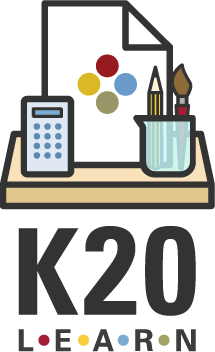Summary
Is Big Brother watching you? Are you being persuaded or confused by double speak? In this lesson, students will analyze propaganda and logical fallacies used in the novel 1984 and reflected in the world around them. Students will participate in a card sort and choosing magnetic statements about logical fallacies and propaganda. Then students will read two excerpts from presidential speeches and analyze them for logical fallacies. Students will create a bento box with examples of logical fallacies and propaganda from 1984 and the world around them. They will finish by reflecting on a prompt about where they see logical fallacies and propaganda around them.
Essential Question(s)
How do authors/speakers use logical fallacies to persuade? How are logical fallacies used in everyday life?
Snapshot
Engage
Students do a Card Sort, sorting quotes from 1984 and categorizing them by logical fallacy.
Explore
Students engage with provocative quotes about propaganda. They choose a statement that draws or repels them, discuss with peers, and share insights with the class.
Explain
Students read two excerpts from presidential speeches and Why-Light forms of logical fallacies in them.
Extend
Students create a Bento Box with examples from 1984 and also from real life.
Evaluate
Students complete an Exit Ticket answering a prompt over logical fallacies.
Materials
Lesson slides (attached)
Presidential Speech Excerpts handout (attached; one per student)
Card Sort handout (attached; one per group of 2–3)
Pens/pencils
Devices with internet connectivity
Envelopes/sandwich bags
Engage
10 Minute(s)
Introduce the lesson by displaying slides 1–3. Discuss with students the essential questions and lesson objectives.
Move to slide 4 to explain the Card Sort. Put students in groups of 2–3 and have them sort the attached cards. These might be new to students, so remind them it’s okay if they don’t know the “correct” answers so far. Ask students to share out and discuss as a whole group what everyone came up with.
Display slides 5–7 to show students the correct answers. Talk through them as a whole class to see how accurate they were.
Explore
15 Minute(s)
Display slide 8, introduce the Magnetic Statements strategy to students, and inform them they will be choosing one of the statements posted around the room to stand beside, whichever one “attracts” or “repels” them most. Before releasing the students to choose a statement, read the statements on slides 9–13 to them.
As you read each statement on the slide, point out where that statement is posted around the room. Slowly read each statement aloud and clarify any statements that might be confusing to students.
After reading them all, ask students to stand by their chosen poster. Once they are at their chosen poster, they should discuss with the group why they chose it and have a volunteer share-out.
Lead the groups in a discussion about the quotes on propaganda.
Depending on the length of the class discussion, this activity should take approximately 15 minutes.
Explain
10 Minute(s)
Display slide 14 and distribute the attached Presidential Speech Excerpts to the whole class. Ask students to read and analyze the speech, then look for logical fallacies with a partner. Students can use the handouts, or websites or card sorts, to help them identify types of logical fallacies throughout the speeches. Ask students to use the Why-Lighting strategy to highlight a portion of the speech and then write a note nearby to explain why they highlighted it (i.e., what fallacy it is and why).
Extend
15 Minute(s)
Display slide 15. Explain to students that they will be using 1984 and real-life examples to create a Bento Box.
Instruct your students to create one image made up of 5–7 different image components, similar to the composition of Japanese bento box-style meals served in a compartmentalized box. Each image should represent some form of propaganda or logical fallacy. Students need to cite at least 3 from 1984 and at least 2 real-world examples.
Evaluate
5 Minute(s)
As a brief evaluation of the lesson, students will complete an Exit Ticket over the lesson. Students will respond in a few sentences to the question on slide 16, “Which logical fallacies or propaganda techniques have you used or had used on you in your day-to-day life?”
Resources
K20 Center. (n.d.). Card sort. Strategies. https://learn.k20center.ou.edu/strategy/147
K20 Center. (n.d.). Magnetic statements. Strategies. https://learn.k20center.ou.edu/strategy/166
K20 Center. (n.d.). Why-lighting. Strategies. https://learn.k20center.ou.edu/strategy/128
K20 Center. (n.d.). Bento box. Strategies. https://learn.k20center.ou.edu/strategy/1128
K20 Center. (n.d.). Bell ringers and exit tickets. Strategies. https://learn.k20center.ou.edu/strategy/125
Nixon, Richard M. (1972). “Address to the Nation on the Situation in Southeast Asia.” National Archives. Miller Center, University of Virginia. https://millercenter.org/the-presidency/presidential-speeches/may-8-1972-address-nation-situation-southeast-asia
Truman, Harry S. (1945). “First Speech to Congress.” National Archives. Miller Center, University of Virginia. https://millercenter.org/the-presidency/presidential-speeches/april-16-1945-first-speech-congress
Orwell, G. (1949). Nineteen Eighty-Four. (2021 ed.) Penguin Classics.


